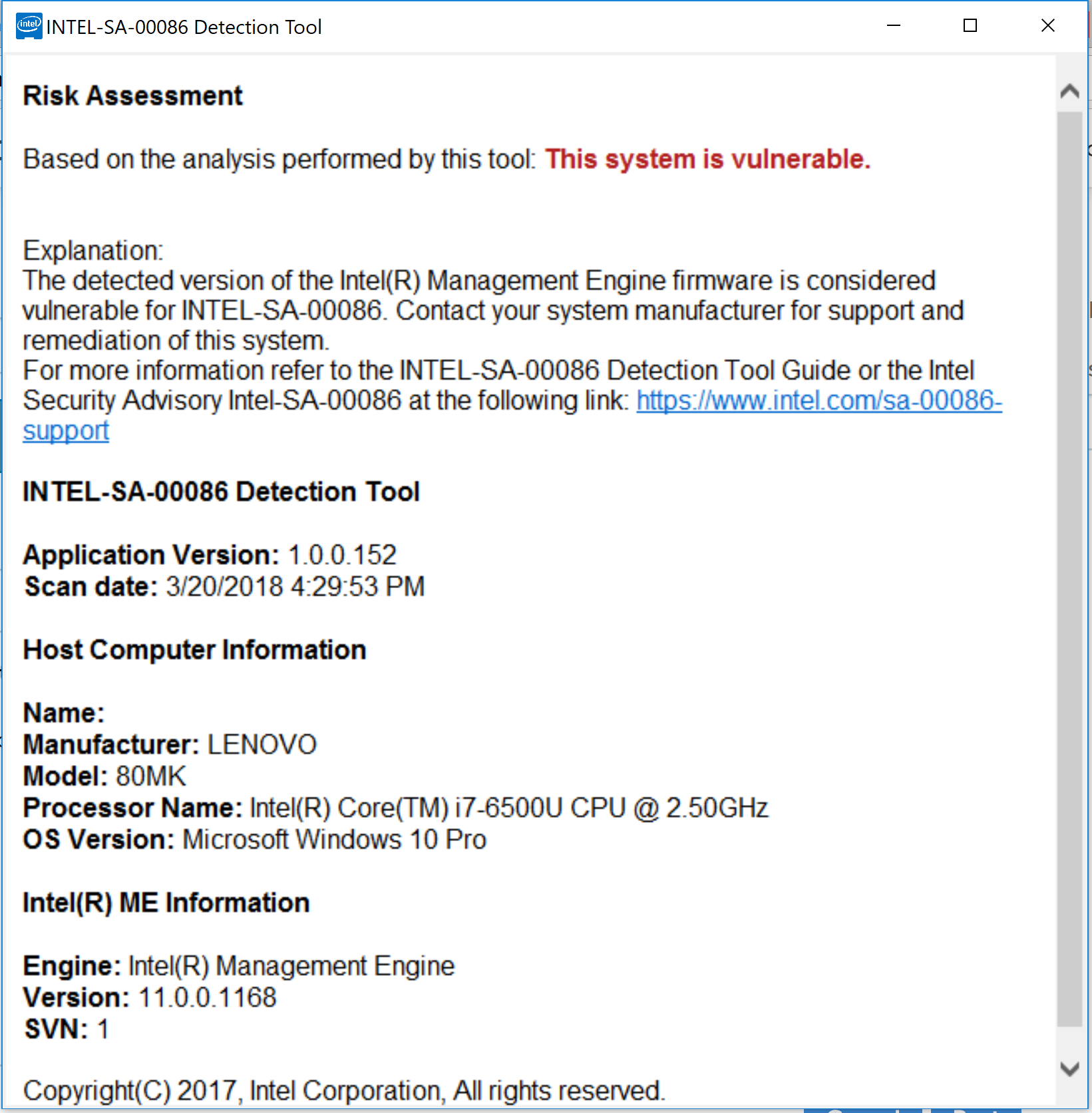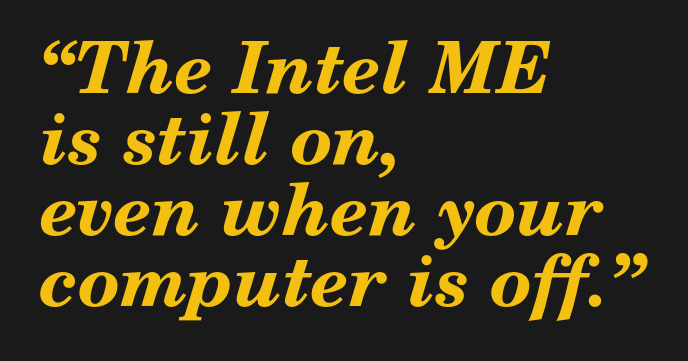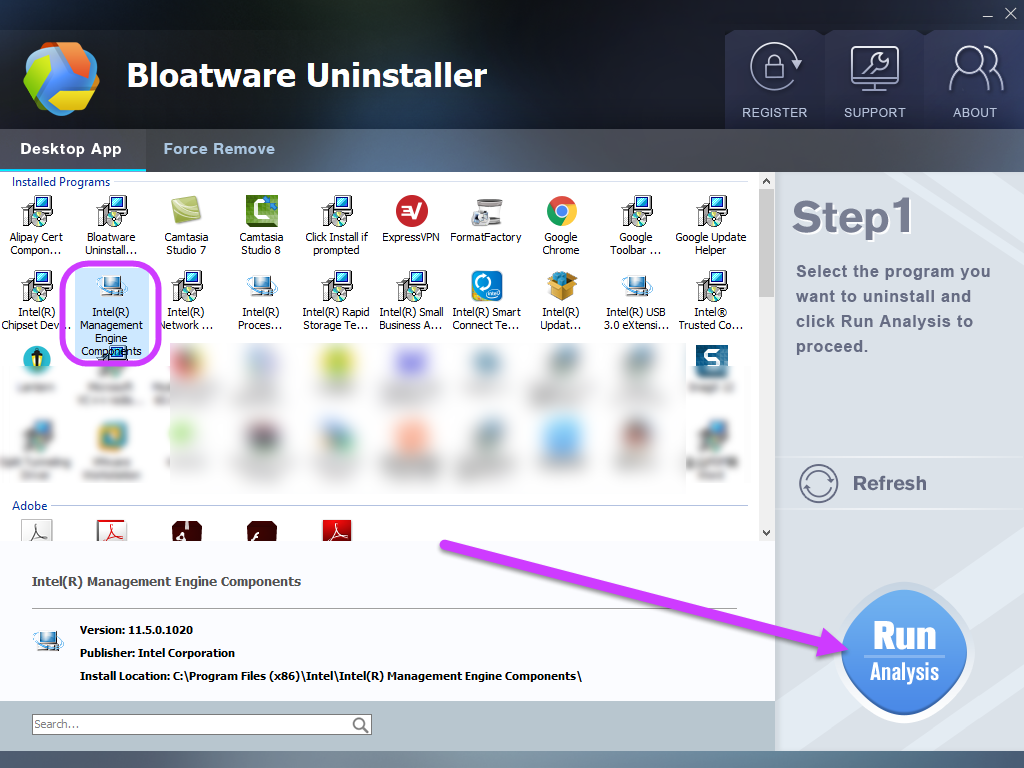

- WHAT IS INTEL MANAGEMENT ENGINE DO I NEED IT HOW TO
- WHAT IS INTEL MANAGEMENT ENGINE DO I NEED IT DRIVERS
- WHAT IS INTEL MANAGEMENT ENGINE DO I NEED IT UPDATE
- WHAT IS INTEL MANAGEMENT ENGINE DO I NEED IT DRIVER
- WHAT IS INTEL MANAGEMENT ENGINE DO I NEED IT WINDOWS 10
WHAT IS INTEL MANAGEMENT ENGINE DO I NEED IT DRIVERS
You can update your Intel Management Engine Interface drivers manually by following the steps below:
WHAT IS INTEL MANAGEMENT ENGINE DO I NEED IT DRIVER
You can correct that by updating the driver manually or automatically. Often, when device hardware fails or misbehaves, it’s due to a corrupted or outdated driver.
WHAT IS INTEL MANAGEMENT ENGINE DO I NEED IT WINDOWS 10
WHAT IS INTEL MANAGEMENT ENGINE DO I NEED IT HOW TO
Here’s how to uninstall a recent Windows 10 update:Īlternatively, press the Windows key + I to launch the Settings window. Note: If the “Intel Management Engine Interface device cannot start” error started after a system update, you can remove that update from your PC. If found, apply the updates and restart your Windows 10 computer.Windows will search for updates automatically. After that, click on the “Check for updates” button.That will take you to the Windows Update tab. From there, click on Update and Security.Now, click on Settings from the menu to launch the Settings window.Īlternatively, press Win + I to launch the app.

Press the Windows + X shortcut to launch the Windows Power User menu.So, if you have pending updates, follow the on-screen instructions to apply the updates as soon as possible. Windows system updates include patches that can help fix problems associated with the Intel Management Engine Interface drivers. If this doesn’t work, try the next solution. It will also show you the results of its attempt to fix the issues. Once the wizard completes, it will notify you of any issues found. After that, click Next and follow the on-screen instructions to complete the troubleshooting process.That will open the Hardware and Devices Troubleshooter in a new window. Enter the following command line after that and hit the Enter button: Now, click on the Command Prompt (Admin) or Windows PowerShell option from the menu to open the corresponding console.Press the Windows key + X to launch the Power User menu.Luckily, you can access the utility via the Command Prompt or PowerShell.įollow the steps below to access the Hardware and Devices Troubleshooter using the Command Prompt or PowerShell: However, Microsoft has removed this utility from its Troubleshoot menu on Windows 10. It helps resolve driver-related problems, so it’s worth giving a try whenever you run into the error code 10 issue. An example is the Hardware and Devices Troubleshooter. Windows has several automated troubleshooters that help solve various issues. Run the Hardware and Devices Troubleshooter.

If the error message reoccurs after this, try the more advanced troubleshooting steps below. Simply restart your PC and try accessing the device again. Always take this basic troubleshooting step before trying out the more advanced ones. What’s more, it saves you the time and energy needed to try out other advanced methods. This is a basic troubleshooting step that clears many simple computer issues, including Code 10 errors. How to Fix the Intel Management Engine Interface on Windows 10 Fortunately, we’ve compiled available solutions to the “Intel Management Engine Interface device cannot start” error. If the IMEI problem led to the Error Code 10, you need not worry. It’s common to removable devices, and it occurs when Windows fails to run a piece of hardware like a flash drive or printer. It can appear on any Windows version, including Windows 7, 8, or 10. It’s a general error message that pertains to unspecified hardware or driver issues. The Code 10 error appears when the Device Manager cannot start a piece of hardware due to corrupted or outdated drivers.


 0 kommentar(er)
0 kommentar(er)
